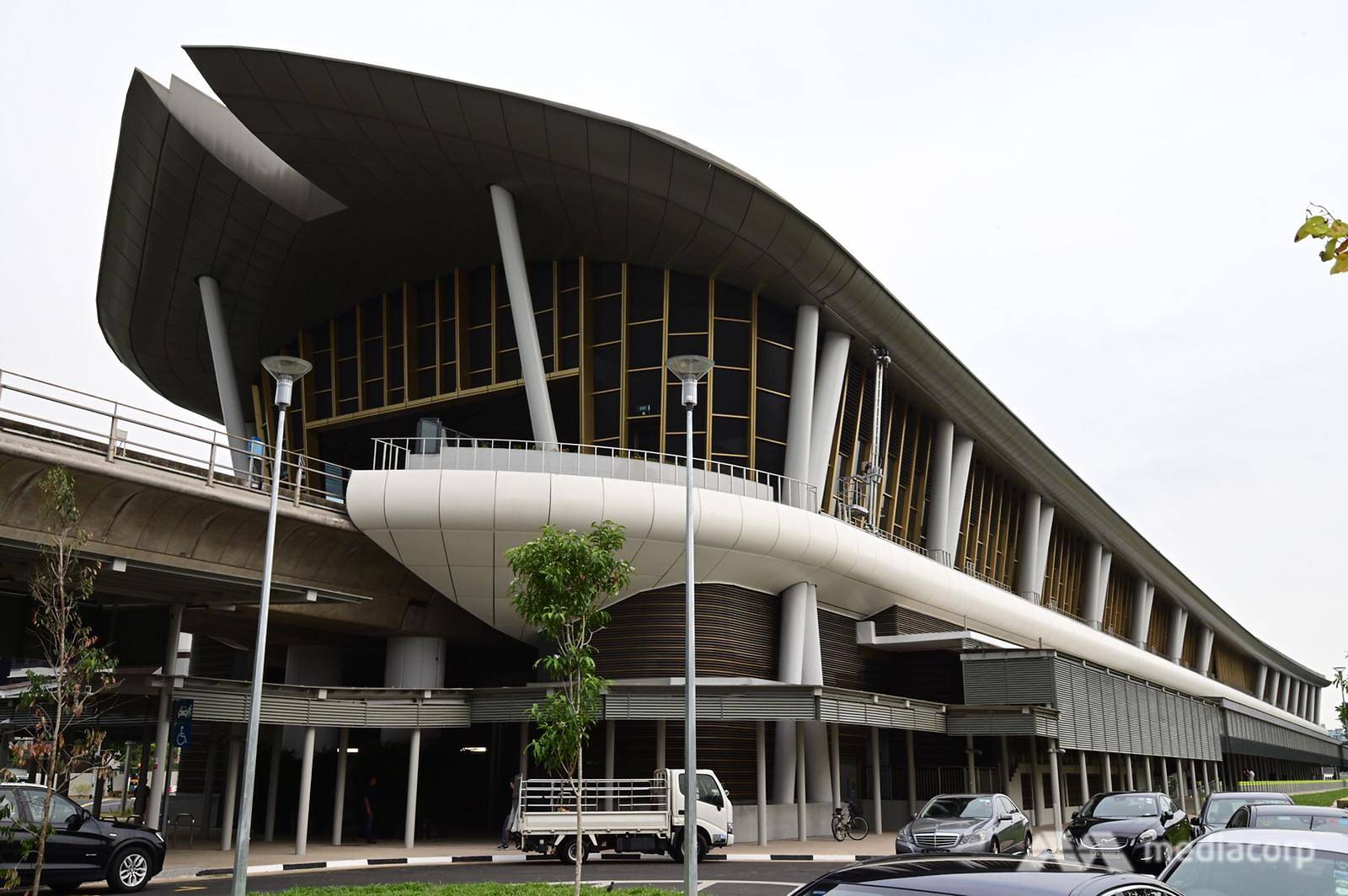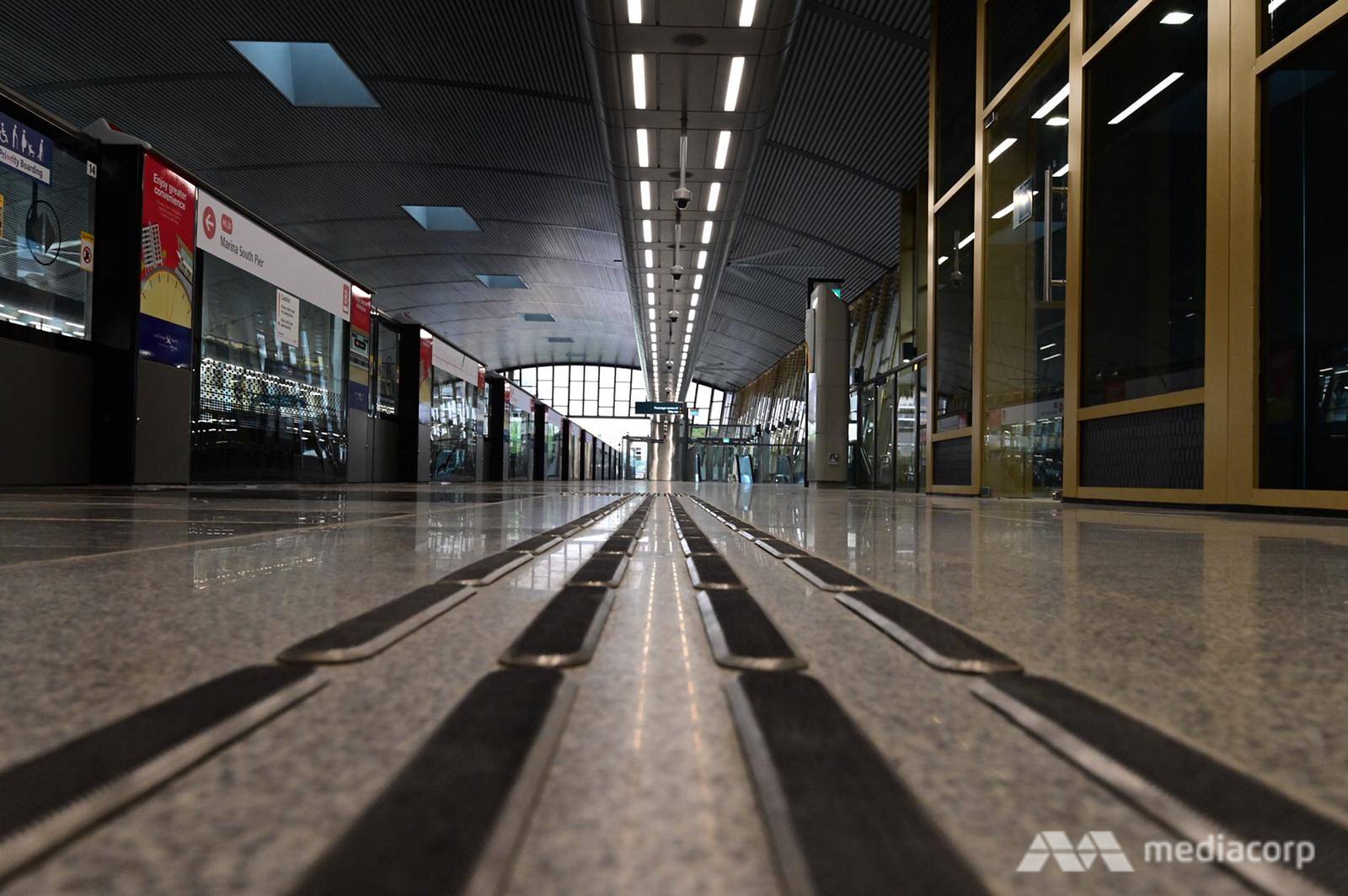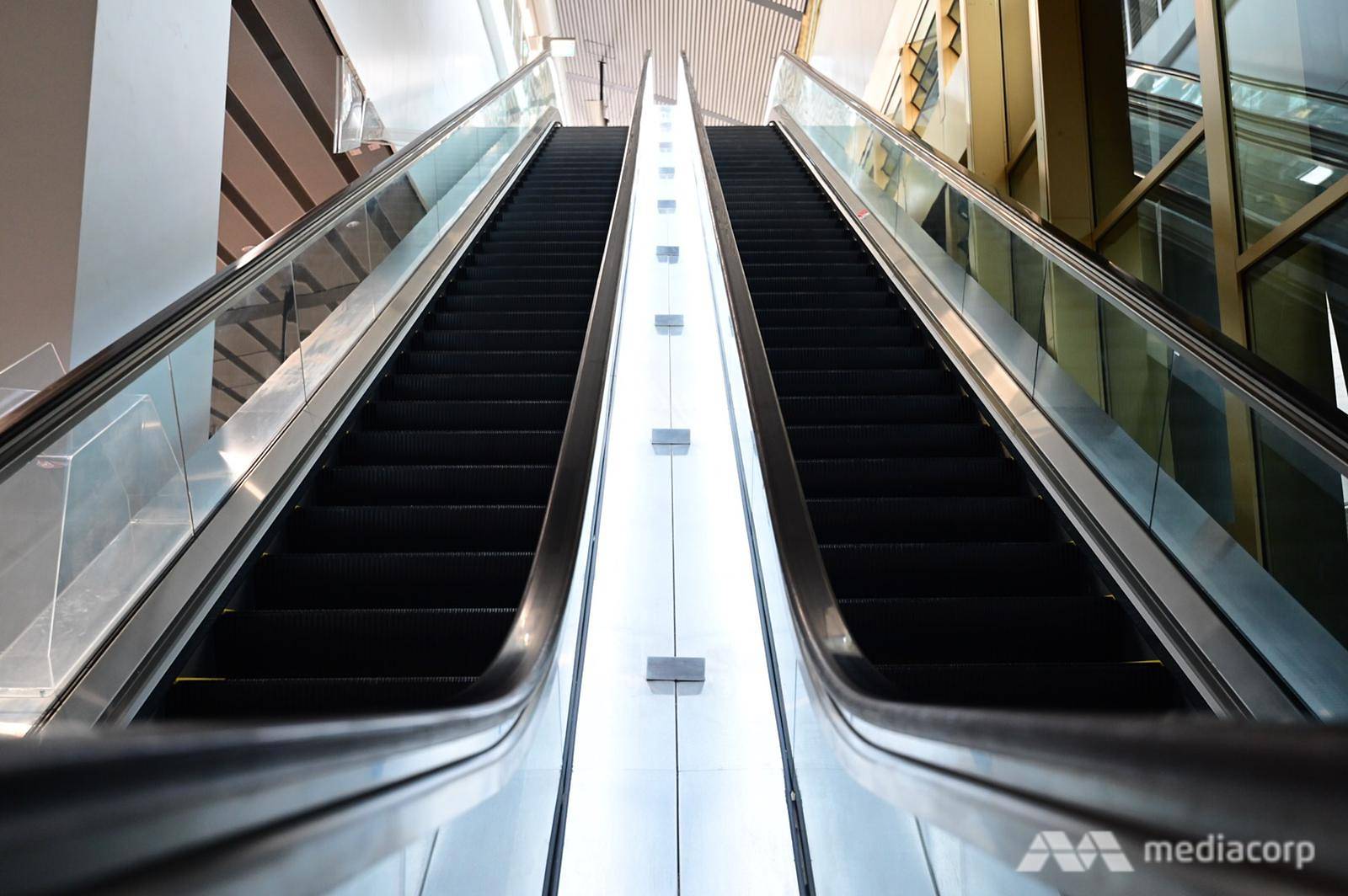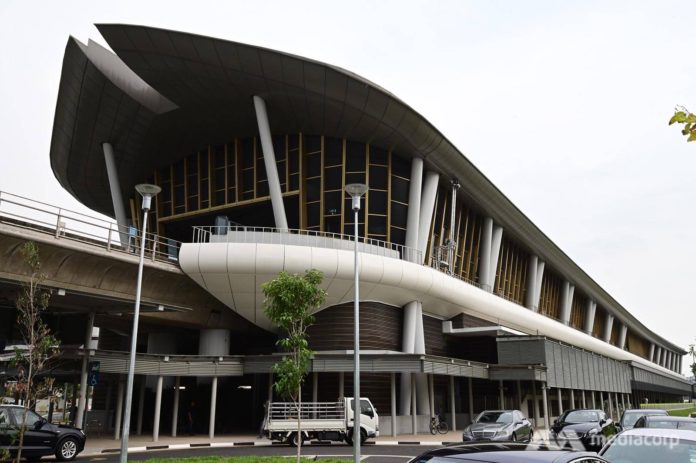SINGAPORE: Singapore’s newest MRT station, Canberra, will open its doors to the public on Saturday (Nov 2).
Located between the Yishun and Sembawang stations, Canberra is the 27th MRT station on the North-South Line.
It is expected to allow residents in the area to save up to 10 minutes of travelling time towards the city or Jurong East, with more than 17,000 households within a 10-minute walk of the new station.
Built by China State Construction Engineering Corporation at a cost of S$90 million, the exterior of the station was designed by DP Architects to resemble a ship as a homage to the area’s maritime heritage.

The exterior of Canberra station was designed to resemble a ship. (Photo: Rauf Khan)
In the early 20th century, the area was home to the Singapore Naval Base, which became the Sembawang Shipyard in 1968 after Singapore’s independence.
Among the new station’s unique features is an art piece featuring drawings of plants and animals, titled Symbiosis. Part of the Land Transport Authority’s Art in Transit series, the artwork can be found at the facade of the station’s north-bound platform.
The station also allows commuters to access the city-bound train platform directly via an elevated link bridge across Canberra Link, the first such feature for an elevated MRT station.
Earlier this year, a 72m-long crossover track was built between the Sembawang and Canberra stations. This allows trains to cross from one track to another if needed, such as in the case of a fault.
SECOND STATION TO BE BUILT ON EXISTING LINE
Attending the opening ceremony of the Canberra station on Friday was Minister for Transport Khaw Boon Wan.
Mr Khaw, who is also an MP for Sembawang GRC, noted plans for the new station – Singapore’s 139th MRT station – had existed on paper for many years.
Minister for Transport Khaw Boon Wan (R) at the opening ceremony of Canberra Station on Friday, Nov 1. (Photo: Rauf Khan)
However, it was not built until a “sufficient number” of residential projects had been launched nearby, he explained.
“As each MRT line is a multi-billion dollar investment, we take a conservative and prudent approach,” he said.
Factors such as projected commuter traffic, estimated time-savings for commuters as well as estimated capital and running cost is taken into account for each new line and station, he noted.
This is done to avoid poor utilisation and unnecessarily high operating costs, said Mr Khaw, noting the authorities have a “heavy responsibility” to minimise the financial burden on both taxpayers and commuters.
“We certainly do not welcome white-elephant MRT stations,” he said.
Mr Khaw also noted Canberra is the first MRT station to be awarded a Platinum rating under the Building and Construction Authority’s Green Mark for Transit Stations, the highest such rating under the scheme.
The new station’s green features – such as energy efficient air conditioning and lighting systems – also help reduce the cost of station operations and keep train fares affordable, he said.

Canberra is the first MRT station to be awarded a Platinum rating under the Building and Construction Authority’s Green Mark for Transit Stations. Its green features include energy-efficient air conditioning and lighting systems. (Photo: Rauf Khan)

Canberra MRT station. (Photo: Rauf Khan)
Canberra is the second station to be built on an existing MRT line, with the first being Dover on the East-West Line, which opened in 2001.
In May, it was announced that another two stations will be built on the North-South Line by the mid-2030s.
READ: Work to construct 5 MRT stations on Jurong Region Line to start in 2020
One of the stations, Brickland, will be located between the Choa Chu Kang and Bukit Gombak stations. It will serve residents in the Keat Hong and Bukit Batok West areas, as well as the upcoming Brickland district in Tengah.
The other, to be called Sungei Kadut, will be located between the Yew Tee and Kranji stations. It will serve as an interchange with the Downtown Line, and serve upcoming industrial developments in the Sungei Kadut area.





